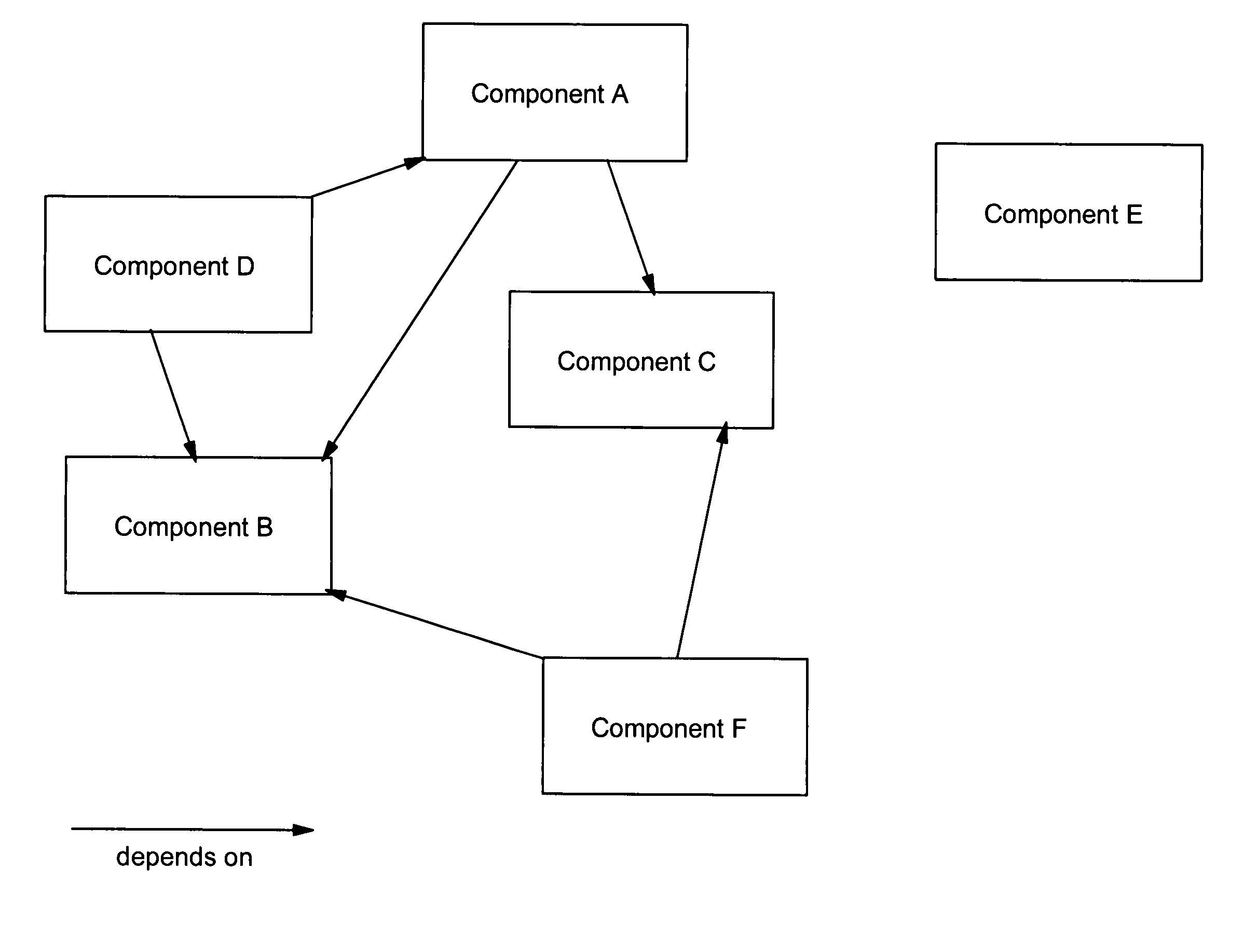Matrix pattern match techniques for uninstalling multiple dependent components
a matrix pattern and component technology, applied in the field of managing software components, can solve the problems of only working recursive algorithms, tedious and difficult programs, and typical mechanisms used to identify components, and achieve the effect of safe uninstallation and rapid determination
- Summary
- Abstract
- Description
- Claims
- Application Information
AI Technical Summary
Benefits of technology
Problems solved by technology
Method used
Image
Examples
Embodiment Construction
[0029]FIG. 1 depicts, in a simplified block diagram, a computer system 100 suitable for implementing embodiments of the present invention. Computer system 100 has a central processing unit (CPU) 110, which is a programmable processor for executing programmed instructions 126 stored in memory 108. Memory 108 can also include hard disk, tape or other storage media. While a single CPU is depicted in FIG. 1, it is understood that other forms of computer systems can be used to implement the invention, including multiple CPUs. It is also appreciated that the present invention can be implemented in a distributed computing environment having a plurality of computers communicating via a suitable network 119, such as the Internet.
[0030] CPU 110 is connected to memory 108 either through a dedicated system bus 105 and / or a general system bus 106. Memory 108 can be a random access semiconductor memory for storing components of an embodiment of the present invention such as matrices or tables as...
PUM
 Login to View More
Login to View More Abstract
Description
Claims
Application Information
 Login to View More
Login to View More - R&D
- Intellectual Property
- Life Sciences
- Materials
- Tech Scout
- Unparalleled Data Quality
- Higher Quality Content
- 60% Fewer Hallucinations
Browse by: Latest US Patents, China's latest patents, Technical Efficacy Thesaurus, Application Domain, Technology Topic, Popular Technical Reports.
© 2025 PatSnap. All rights reserved.Legal|Privacy policy|Modern Slavery Act Transparency Statement|Sitemap|About US| Contact US: help@patsnap.com



